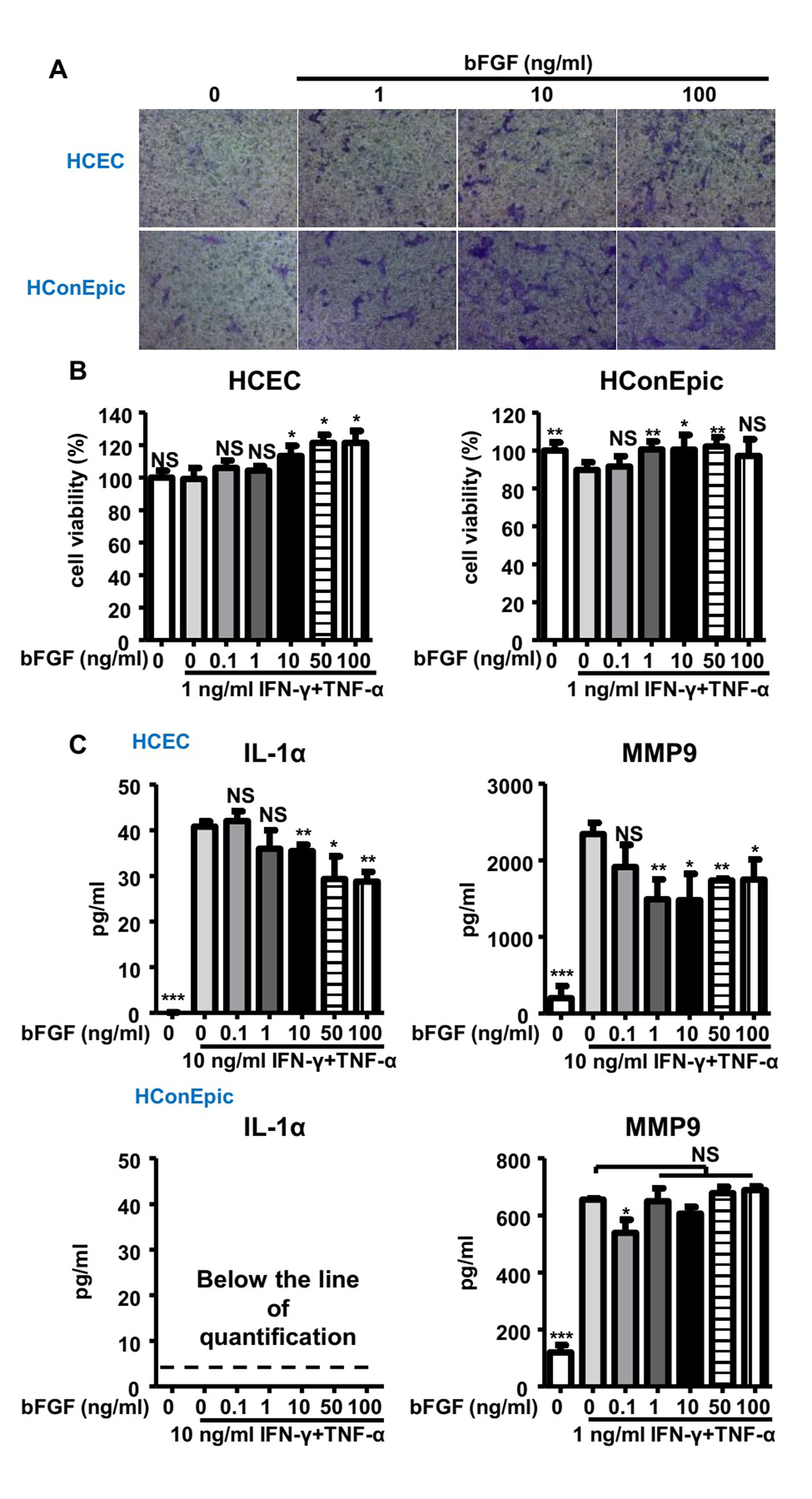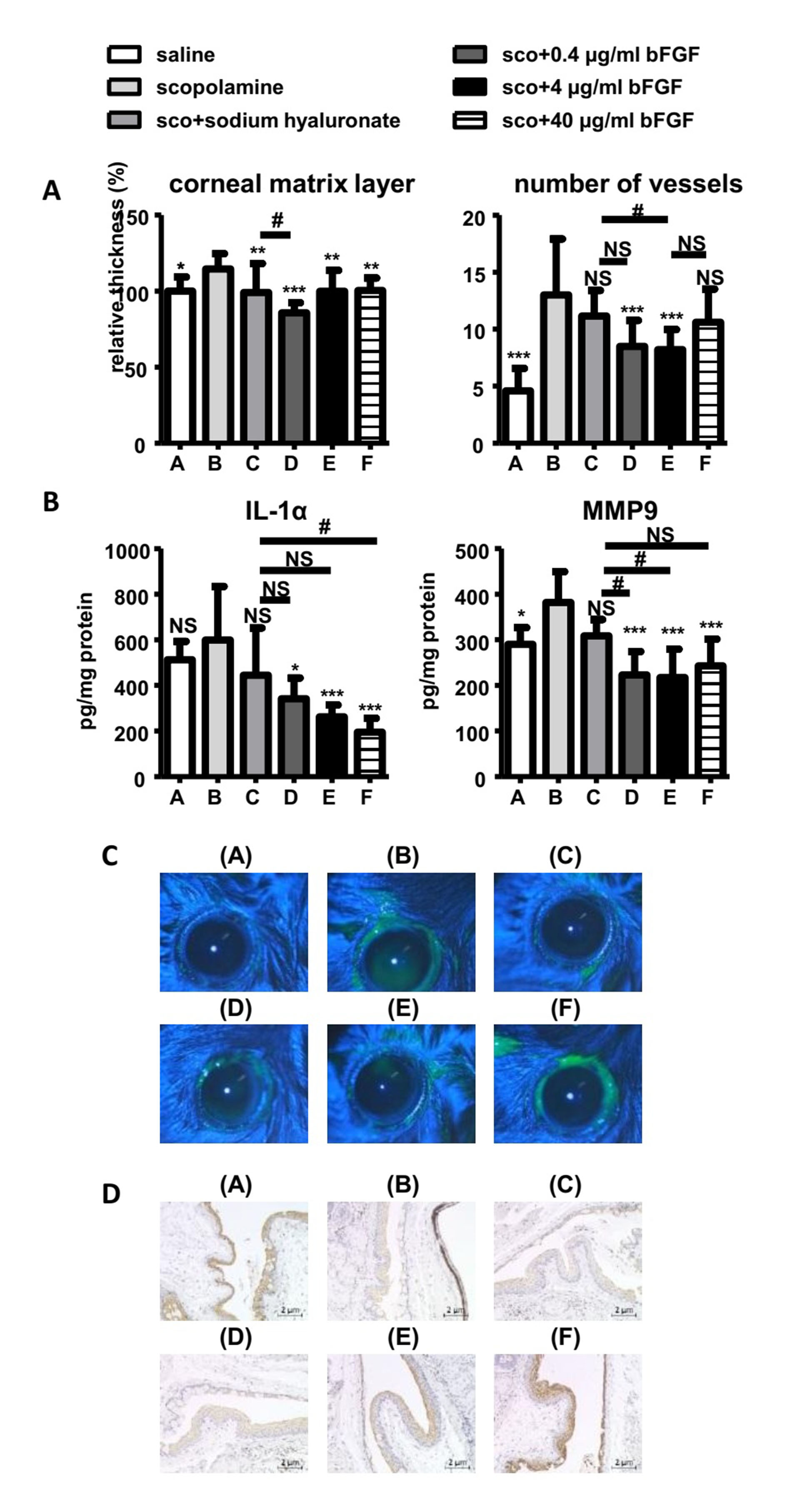bFGF alleviated dry eye disease by modulating inflammatory response and promoting healing process both in vitro and in vivo
Author Block: YINGLUO XIONG1,2 , Bo Yang1 , Tao Jiang1 , Chenghao Xiong1 , Qi Xue3 , Haicai Li4 , Haizhou Fang5 , Ge Zhang2 , Malcom Ngiam3
1 R&D Center, Zhuhai Essex Bio-Pharmaceutical Co. Ltd., Zhuhai, Guangdong, China; 2 School of Pharmaceutical Sciences, Sun Yat-Sen University, Guangzhou, Guangdong, China; 3 Essex Bio-Technology LTD, China; 4 Marketing Department, Zhuhai Essex Bio-Pharmaceutical CO., LTD, Zhuhai, Guangdong, China; 5 Zhuhai Essex Bio-Pharmaceutical CO., LTD, China
Disclosure Block:YINGLUO XIONG, Zhuhai Essex Bio-pharmaceutical CO., LTD. (Code E (Employment)); Bo Yang, Zhuhai Essex Bio-pharmaceutical CO., LTD. (Code E (Employment)); Tao Jiang, Zhuhai Essex Bio-pharmaceutical CO., LTD. (Code E (Employment)); Chenghao Xiong, Zhuhai Essex Bio-pharmaceutical CO., LTD. (Code E (Employment)); Qi Xue, Essex Bio-Technology LTD (Code E (Employment)); Haicai Li, Zhuhai Essex Bio-pharmaceutical CO., LTD. (Code E (Employment)); Haizhou Fang, Zhuhai Essex Bio-pharmaceutical CO., LTD. (Code E (Employment)); Ge Zhang, None; Malcom Ngiam, Essex Bio-Technology LTD (Code E (Employment))
Purpose:Dry eye disease is a multifactorial disease accompanied by ocular damage. Basic fibroblast growth factor (bFGF) plays an essential role in wound healing, however, its role in dry eye induced ocular damage remains controversial. In this study, we elucidated cellular and molecular major markers of eye inflammation after the use of bFGF in preclinical settings.
Methods:We established in vitro inflammatory model by stimulation of IFN-γ and TNF-α in human corneal epithelial cell (HCEC) and conjunctival epithelial cell (HconEpic). We observed cellular responses, including cell viability, migration, and secretion of cytokines w/o bFGF. In vivo model was established by scopolamine-stimulation in C57BL/6J mouse. bFGF was applied and sodium hyaluronate eye-drop was used as positive control. Corneal damage was evaluated by fluorescein staining. Cytokines and mucus were assayed with ELISA and IHC staining.
Results:bFGF promotes proliferation and migration of HCEC and HconEpic. Under low-dose IFN-γ and TNF-α induced inflammation, bFGF effectively protected cells from death. We have noticed that IL-1α, IL-1β, IL-6 and MMP9 by HCEC, IL-6 and MMP9 by HconEpic were upregulated upon IFN-γ and TNF-α stimulation. bFGF downregulated the level of IL-1α, IL-1β, IL-6 and MMP9 in HCEC. A slight inhibitory effect on the expression of IL-6 by bFGF was observed in HconEpic. Regarding results from cytokine studies, we obtained consistent results from in vivo study. bFGF also showed therapeutic effect on dry eye as evidenced by increased tear secretion, attenuated fluorescein staining of corneas, decreased corneal matrix swelling and fewer number of vessels around conjunctiva. Interestingly, sodium hyaluronate showed no effect on mucus secretion, while bFGF obviously improved the mucus to a normal level.
Conclusions:bFGF showed protective effects on ocular surface epithelial cells in moderate inflammation by promoting cell proliferation, migration and regulating cytokine production. bFGF attenuated mouse dry eye induced ocular damage and increased mucus secretion. All evidence indicated that bFGF could be a prospective approach for the treatment of dry eye, at least in non-severe dry eye disease.
Layman Abstract (optional): Provide a 50-200 word description of your work that non-scientists can understand. Describe the big picture and the implications of your findings, not the study itself and the associated details.:Dry eye syndrome is a multifactorial disease, potentially accompanied by ocular surface damage that results in symptoms of discomfort. Basic fibroblast growth factor (bFGF) was a member of FGF family protein. bFGF plays multifunctional roles during physiological and pathological processes including cell growth, skin wound healing and tissue development. However, less is known about its role in ocular physiology and inflammation modulation. In our study, we demonstrated that bFGF promotes normal corneal and conjunctival epihthelial cell proliferation and migration. In mild inflammation environment in vitro, bFGF prevents cell death and inhibited inflammatory cytokine and matrix production. Also, bFGF significantly ameliorated dry eye inflammation and tissue damage in scopolamine-induced experimental dry eye model, even better than a classical dry eye medication, sodium hyaluronate. Collectively, we revealed the role of bFGF not only in ocurlar surface cell growth and tissue repair, but also in controling mild eye inflammation, which may provides therapeutic value of bFGF in dry eye.

bFGF modulated proliferation (A) and inflammatory response in HCEC and HConEpic (B & C),

bFGF alleviated damage of ocular tissue and inflammation (A & B), improved mucus secretion in mouse dry eye (C & D)


 粤公网安备 44049102496184号
粤公网安备 44049102496184号